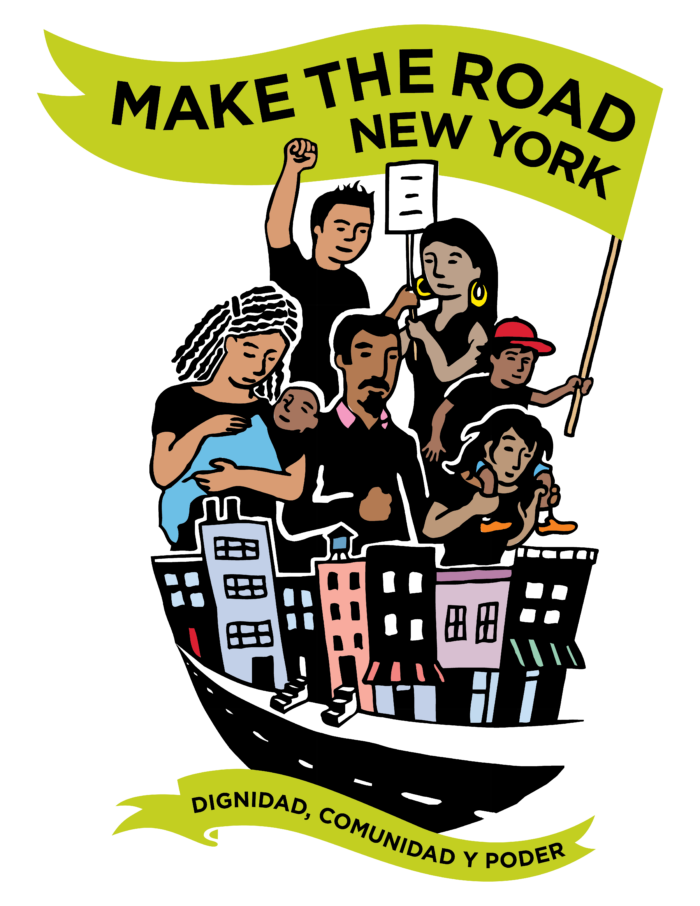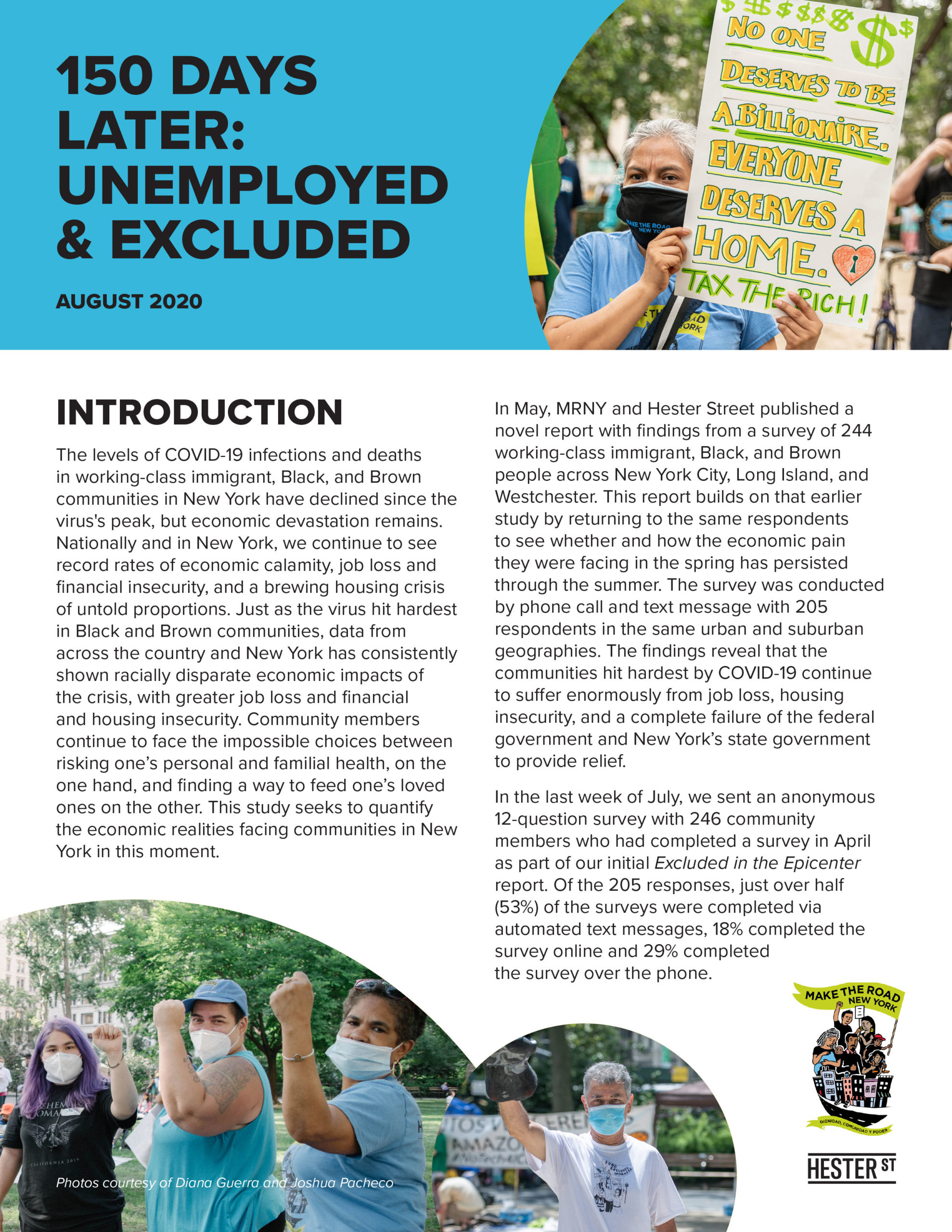INTRODUCTION
The levels of COVID-19 infections and deaths in working-class immigrant, Black, and Brown communities in New York have declined since the virus’s peak, but economic devastation remains. Nationally and in New York, we continue to see record rates of economic calamity, job loss and financial insecurity, and a brewing housing crisis of untold proportions. Just as the virus hit hardest in Black and Brown communities, data from across the country and New York has consistently shown racially disparate economic impacts of the crisis, with greater job loss and financial and housing insecurity. Community members continue to face the impossible choices between risking one’s personal and familial health, on the one hand, and finding a way to feed one’s loved ones on the other. This study seeks to quantify the economic realities facing communities in New York in this moment.
In May, MRNY and Hester Street published a novel report with findings from a survey of 244 working-class immigrant, Black, and Brown people across New York City, Long Island, and Westchester. This report builds on that earlier study by returning to the same respondents to see whether and how the economic pain they were facing in the spring has persisted through the summer. The survey was conducted by phone call and text message with 205 respondents in the same urban and suburban geographies. The findings reveal that the communities hit hardest by COVID-19 continue to suffer enormously from job loss, housing insecurity, and a complete failure of the federal government and New York’s state government to provide relief.
In the last week of July, we sent an anonymous 12-question survey with 246 community members who had completed a survey in April as part of our initial Excluded in the Epicenter report. Of the 205 responses, just over half (53%) of the surveys were completed via automated text messages, 18% completed the survey online and 29% completed the survey over the phone.

